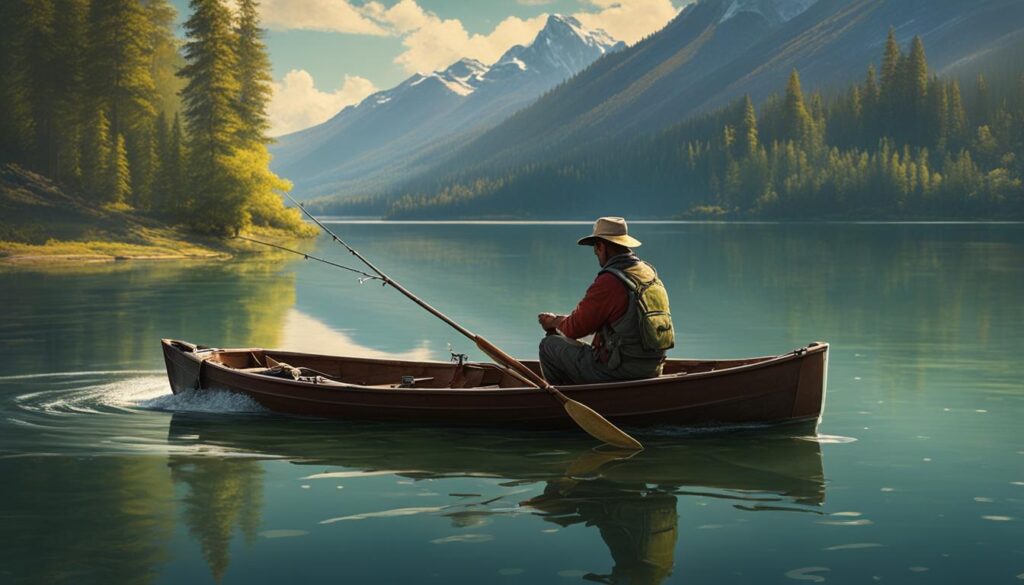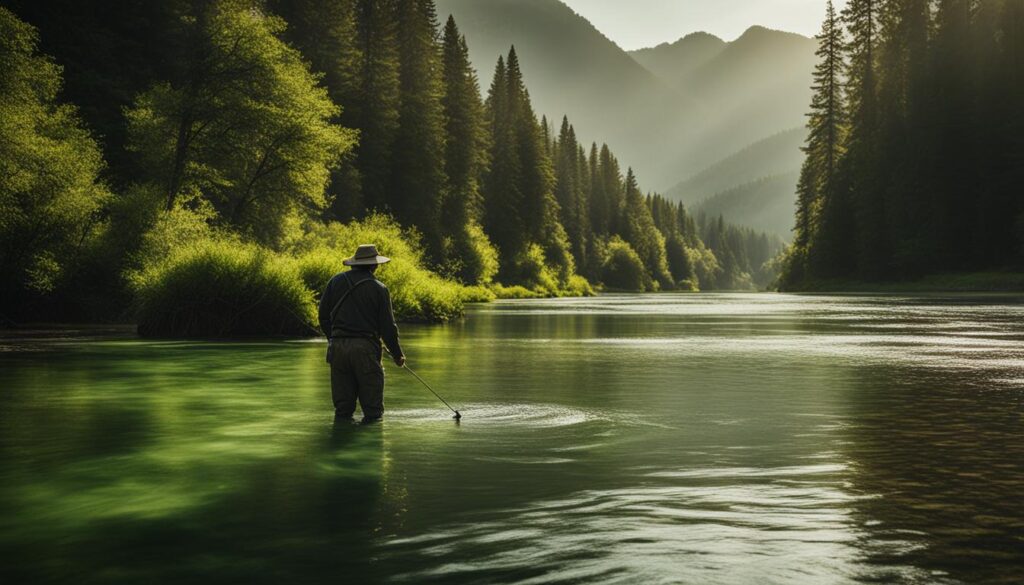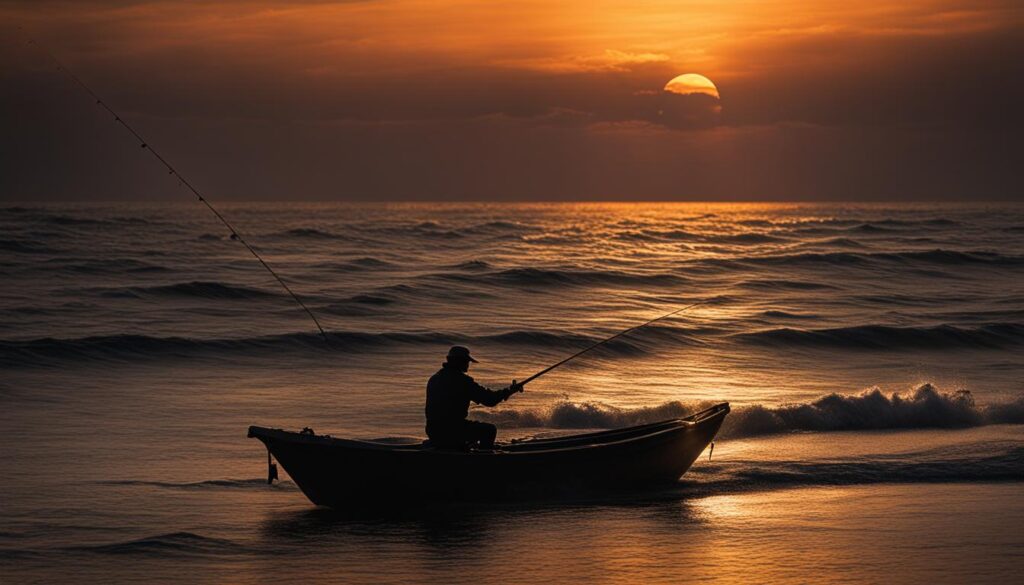We may earn money or products from the companies mentioned in this post.
If you are an avid fisherman, you know that fishing success is a combination of skill, luck, and the right conditions. One of the most critical factors that contribute to successful fishing is understanding fishing weather patterns. By understanding how weather conditions impact fish behavior, you can increase your chances of a successful catch.
Fishing weather patterns are an essential aspect of fishing, and it’s crucial to know how different weather patterns can affect your fishing experience. Fishing in the wrong weather conditions can result in an unsuccessful day on the water. However, fishing in ideal weather conditions can lead to an abundant catch.
In this section, we will discuss how you can master fishing weather patterns to significantly impact your chances of catching fish. We will provide tips on understanding fishing weather patterns and how to adjust your techniques based on different weather conditions.
Key Takeaways
- Understanding fishing weather patterns is crucial for successful fishing
- Fishing in the wrong weather conditions can result in an unsuccessful day
- Adapting techniques based on various weather patterns can increase catch rate
- Knowing optimal locations and times for specific weather patterns is essential
- Selecting appropriate gear for different weather conditions is necessary
Analyzing Fishing Weather Patterns
When it comes to fishing, understanding and analyzing weather patterns is crucial for planning successful fishing trips. By paying close attention to weather conditions, you can make informed decisions about where and when to fish, adjust your techniques and improve your chances of success.
Components of Fishing Weather Patterns
There are several key components of fishing weather patterns that you should pay attention to when planning your fishing trip. These include:
| Component | What to Look For |
|---|---|
| Temperature | The temperature of the water and the air can greatly impact fish activity. For example, fish tend to be more active in warmer water temperatures. |
| Wind Direction | The direction of the wind can impact water currents and fish behavior. A steady offshore wind can push baitfish closer to the shore, making it easier for predators to catch them. |
| Barometric Pressure | Changes in barometric pressure can affect fish swim bladder, causing them to move into shallower water or become inactive. |
| Cloud Cover | Cloud cover can impact the amount of light that penetrates the water, which can affect fish behavior. On sunny days, fish may retreat to deeper, cooler water to avoid bright light. |
In addition to these factors, it’s also important to pay attention to fishing weather forecasts. These forecasts can provide valuable information about temperature, wind direction, barometric pressure, cloud cover and other factors that can impact your fishing success.
Using Fishing Weather Forecasts
Fishing weather forecasts can help you make informed decisions about when and where to fish. When reviewing forecasts, look for information on:
- Temperature
- Wind speed and direction
- Cloud cover
- Chance of precipitation
- Tide schedule
By examining this information, you can determine the best time and location for your fishing trip.
Pro Tip: Try to plan your fishing trip for the days when weather patterns are stable. Rapid changes in temperature, wind, barometric pressure, or cloud cover can make fish less active and more difficult to catch.
Strategies for Fishing in Different Weather Conditions
Fishing is an activity that is heavily influenced by weather patterns. To maximize your chances of a successful catch, it’s crucial to understand the best fishing weather conditions and adapt your strategies accordingly. Here are some expert tips for fishing in different weather conditions:
Sunny and Clear Weather
Sunny and clear weather conditions can be optimal for fishing, but it’s important to adjust your techniques accordingly. Fish tend to be more active and visible in clear water, so using lures that mimic their natural prey can be highly effective. Additionally, fishing during the early morning or late afternoon when the sun is not directly overhead can increase your chances of catching more fish.
Rainy and Overcast Weather
During rainy and overcast weather conditions, fish often move closer to the surface and become more active. To take advantage of these conditions, try using topwater lures or bait that floats. Fishing near structures such as fallen trees, docks, or bridges can also be effective, as fish may seek shelter in these areas during the rain.
Windy and Stormy Weather
Windy and stormy weather can make fishing more challenging, but it can also create opportunities for success. Fish tend to be more active in choppy water, so using lures that create a lot of movement and noise can be effective. Additionally, fishing in areas with natural windbreaks, such as coves or inlets, can help you avoid the worst of the wind while still having a chance at catching fish.
Cold Fronts and High Pressure Systems
Cold fronts and high pressure systems can make fishing more difficult, as fish tend to become less active and move to deeper waters. During these weather patterns, it’s best to fish more slowly and focus on using bait that is attractive to the specific type of fish you’re targeting. Additionally, fishing during the warmest part of the day when the water temperature is at its highest can increase your chances of catching fish.
Summary
Knowing the best fishing weather conditions and adapting your strategies accordingly can greatly increase your chances of a successful catch. Whether it’s sunny and clear, rainy and overcast, windy and stormy, or during a cold front or high pressure system, understanding how weather affects fish behavior can give you an edge when it comes to fishing. Combine these strategies with the right gear and equipment, and you’ll be well on your way to becoming a more successful angler.
Location and Timing for Fishing in Specific Weather Patterns
Understanding how specific weather patterns influence fish behavior is essential for successful fishing. Different weather patterns require different tactics to increase your chances of a successful catch. In this section, we will provide a fishing weather patterns guide to help you catch more fish during specific weather conditions.
Cold Fronts
During a cold front, fish tend to move deeper and become less active. To increase your chances of a catch, it’s best to fish slowly and use live bait. Look for areas with structure, such as drop-offs or underwater ledges, where fish may be seeking shelter from the cold front.
Rainy and Overcast
During rainy and overcast weather, fish often become more active and move closer to the surface. Fishing near the shoreline or in shallow waters can often be productive during these conditions. Use brightly colored lures or topwater baits to attract fish that are feeding close to the surface.
Windy Conditions
Wind can create choppy water conditions that can help hide your presence from fish. Look for areas where waves are breaking, such as points or rock outcroppings, where fish may be feeding. Use lures that mimic natural prey, such as swimbaits or jerkbaits, to attract fish that are feeding in choppy water.
Hot and Sunny
During hot and sunny weather, fish tend to move deeper to find cooler water temperatures. Look for areas with shade, such as overhanging trees or underwater structures, where fish may be seeking relief from the heat. Use slow-moving lures or live bait to entice fish that are less active due to the warm water.
By using the tactics outlined in this fishing weather patterns tactics guide, you can increase your chances of a successful catch during various weather conditions. Remember, different weather patterns require different approaches, so it’s essential to adapt your strategies based on the weather conditions you are facing.
Gear and Equipment for Fishing in Different Weather
When it comes to fishing, having the right gear and equipment is essential to increase your chances of success in any weather condition.
First and foremost, it’s crucial to have appropriate clothing for the weather. Dressing in layers is recommended as temperatures can fluctuate throughout the day. In colder weather, insulated and waterproof clothing can keep you warm and dry, while hot weather requires lightweight and breathable attire.
Choosing the right fishing rod and line is also important when it comes to adapting to different weather patterns. In windy conditions, a shorter, stiffer rod with a heavier line can help with accuracy and control. On the other hand, calmer conditions call for longer, more flexible rods with lighter lines to attract fish with more natural movement.
Bait and lures should also be adjusted to suit the weather conditions. In clear and sunny conditions, using brighter colors can attract fish, while in darker, overcast conditions, a more subdued color scheme can be effective. Additionally, using scent-based baits can help in rainy conditions where the water is more murky.
| Weather Condition | Recommended Gear and Equipment |
|---|---|
| Sunny and Clear | Long, flexible fishing rod with lighter line, brighter bait/lures |
| Cloudy and Overcast | Long, flexible fishing rod with lighter line, subdued bait/lures |
| Rainy | Shorter, stiffer fishing rod with heavier line, scent-based baits |
| Windy | Shorter, stiffer fishing rod with heavier line, brighter bait/lures |
Other important gear to consider includes polarized sunglasses to reduce glare on sunny days, a hat with a brim to protect from the sun, and a waterproof bag or case to keep your gear dry in rainy conditions.
By selecting the appropriate gear and equipment to match the weather conditions, you can greatly enhance your chances of success while fishing.
Conclusion
Fishing is a beloved hobby for many and with the right knowledge on fishing weather patterns, you can increase your chances of a successful catch. Throughout this article, we have explored the importance of understanding and analyzing weather conditions, adapting your strategies, considering location and timing, and selecting appropriate gear for optimal fishing experiences.
Stay Informed
It is crucial to stay informed about fishing weather forecasts before heading out to the water. With the advent of technology, you can easily access various weather apps and websites that can provide updates on weather conditions in real-time. By keeping up to date with the latest information, you can better plan your fishing trips and make informed decisions.
Apply the Knowledge
Adapting to different weather patterns and conditions is a skill that can be honed with practice. By applying the knowledge shared in this article, you can greatly increase your chances of success on your fishing trips. Remember to adjust your techniques, location, and gear as per the weather conditions to optimize your chances of a successful catch.
Final Thoughts
In conclusion, mastering fishing weather patterns is imperative for successful catches on your fishing trips. With the right understanding of weather conditions and the appropriate gear and techniques, you can enhance your fishing experience and make the most of every fishing trip. We hope that this article has provided you with valuable insights and tips for fishing in different weather conditions. Happy fishing!
FAQ
What are fishing weather patterns?
Fishing weather patterns refer to the different weather conditions and elements that can affect fish behavior and their availability for catching. These patterns include factors such as temperature, wind direction, barometric pressure, cloud cover, and precipitation.
Why is it important to understand fishing weather patterns?
Understanding fishing weather patterns is crucial because it can greatly impact your chances of success while fishing. By knowing how different weather conditions impact fish behavior, you can plan your fishing trips more effectively, adapt your strategies accordingly, and increase your catch rate.
How can I analyze fishing weather patterns?
To analyze fishing weather patterns, you can start by monitoring weather forecasts and paying attention to key elements such as temperature trends, wind direction, and barometric pressure changes. Additionally, keeping a fishing journal and noting successful catches in different weather conditions can help you identify patterns over time.
What are some strategies for fishing in different weather conditions?
When fishing in different weather conditions, it’s important to adapt your techniques. For example, during sunny and clear conditions, fish may seek shade or deeper waters, so targeting those areas can be effective. In rainy and overcast conditions, fish tend to be more active near the surface, so using topwater lures or bait can be successful. In windy and stormy conditions, focusing on sheltered areas or using heavier lures can help maintain control.
How does weather affect fish behavior and location?
Weather conditions can influence fish behavior and their location in the water. For example, during cold fronts, fish often become less active and seek deeper or warmer waters. During rain showers, fish may feed more actively near the surface as rain can wash insects and food into the water. In windy conditions, fish may congregate in calmer areas or near structures for shelter.
What gear and equipment should I use for fishing in different weather?
When fishing in different weather conditions, it’s important to have the right gear and equipment. In general, you should consider using appropriate fishing rods and lines that can handle varying weather conditions. Additionally, selecting the right bait and lures that mimic the natural prey in specific weather patterns can increase your chances of success.
Affiliate Disclosure: This post may contain affiliate links. If you purchase through our link, we may receive a small commission, but at no additional cost to you. For more information, please see our Disclosure statement.



